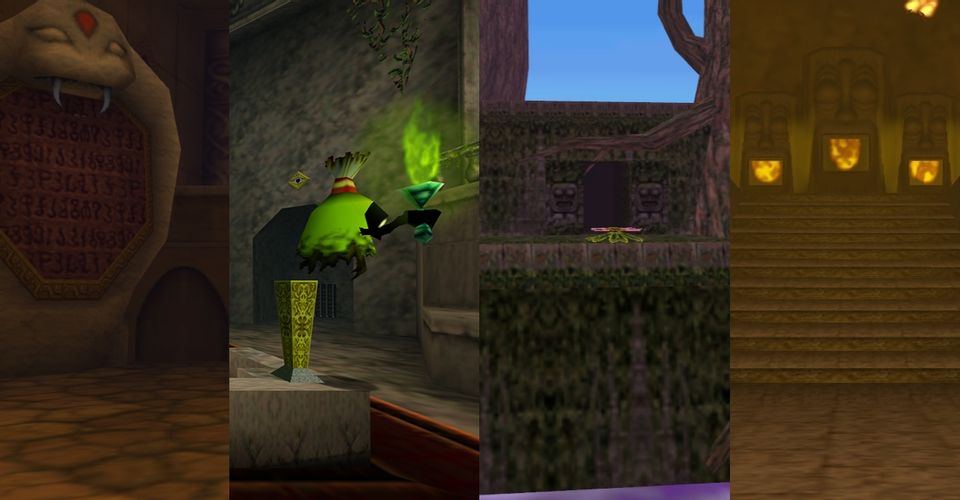Four Zelda Songs With Real-World Musical Influences

For almost 35 years, The Legend of Zelda has set incredibly high bars for every facet of game design and production. The music of Koji Kondo and other composers is as unmistakable as it is ingenious, particularly in how it frequently weaves musical styles from other cultures across the globe. Some songs go beyond mere influence and actually incorporate real-life samples.
Far from appropriation, the utilization of world music is not only respectful, but it also gives the world of Zelda a greater sense of realism, making the player feel like they’re in a setting of lived-in history rather than pure fantasy. That sensation is what makes The Legend of Zelda the benchmark for adventure gaming. Every temple, every building, feels like a mystery that must be unraveled, and the music serves to guide that curiosity.
Of course, as engrossing as the world of Zelda is, it’s important to acknowledge the cultures which provided the elements of some of its best songs. From Mesoamerican rhythms to Islamic prayer chants, here are some of the best instances of world music in the adventures of Link and Zelda.
#4 Real World Zelda Song – Forest Temple, Ocarina of Time

From the moment it starts, the Forest Temple’s theme signifies the increase in difficulty and complexity for Link’s journey as an adult. It’s dissonant and utterly haunting, with spectral noises and clattering percussion that are hard to characterize, yet effective. The mystery is compounded by a real-life sample of an African chant over a flute. Layered with everything else, the chant feels almost like it’s beckoning Link to go deeper into the temple’s darkest crevices.
#3 Real World Zelda Song – Spirit Temple, Ocarina of Time

Usually acting as the last temple before Link squares off with Ganondorf at his palace, the Spirit Temple brims with lively Egyptian influence, starting with its architecture and statues. That’s accentuated further by the stage’s theme, whose percussion is likely from an Egyptian darbuka, according to gaming YouTube channel Around the Monitor. The central part of the melody is played on a duduk, an Armenian wind instrument prominent throughout the Middle East. The last international ingredient comes from the Indian dilruba, which accompanies the duduk to create an eerie, discordant sensation that mirrors the lived-in temple Link must visit as both a child and adult.
Like many of the songs from Ocarina of Time, it’s one that’s worth listening to repeatedly on its own – although it will likely take many separate listens to envision the song without the sound of those two pots flying at Link as soon as the opening gong cues up.
#2 Real World Zelda Song – Woodfall Temple, Majora’s Mask

Much like the Spirit Temple, this stage in the macabre, jarring masterpiece Majora’s Mask apes ancient civilizations to create an engrossing set piece. In this instance, the music and imagery of Mesoamerica comes to life.
The temple is filled with Mayan references like butterfly and face sculptures, and the boss, Odolwa, chants various phrases in ancient Mayan language. But it’s the music that ties it all together. With a relentless jug drum beat driving it, the tribal chants and Aztec whistle cries accentuate the temple’s dangerous mystique, and the looming showdown with an ancient warrior at the end.
#1 Real World Zelda Song – Fire Temple, Ocarina of Time

No song in the entire series benefits more from a world music sample than this one. The Fire Temple, where Link must rescue captured Gorons from the menacing dragon Volvagia, is cradled by a minimalist soundtrack that’s mostly a slow drum beat. What puts it over the top (that is, depending on which version the player is playing) is a series of dissonant Islamic prayer chants. The prayers, which intermittently echo throughout the player’s time in the dungeon, give the mission real gravitas. Some players even interpreted them as Gorons praying to Volvagia to spare them.
Many believe the chants were removed from later prints of the game due to backlash. In reality, Nintendo removed them from Ocarina of Time due to their own policy of not explicitly referencing real-life events, as the chants do contain clear mentions of Allah. The chants were replaced by eerie voices clearly recycled from the Shadow Temple theme. They not only feel out of place, but they don’t strengthen the Fire Temple’s atmosphere nearly as well as the original version.
Much like the sokushinbutsu in Breath of the Wild, incorporating real-world spirituality was in-step with other games released at the same time as Ocarina, or after. The same Islamic prayer that Nintendo axed was also used in Cruis’n World and Street Fighter V, although it was removed from the latter to avoid controversy in a manner similar to Nintendo.
About The Author
















